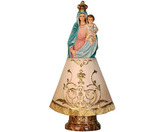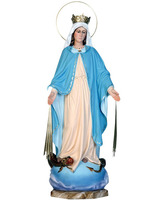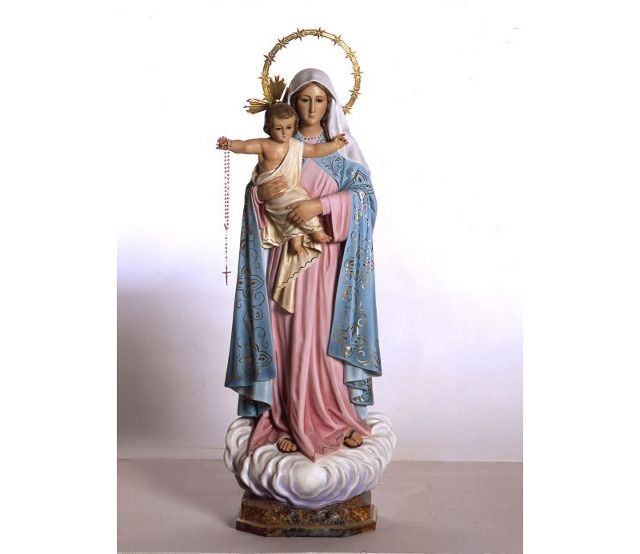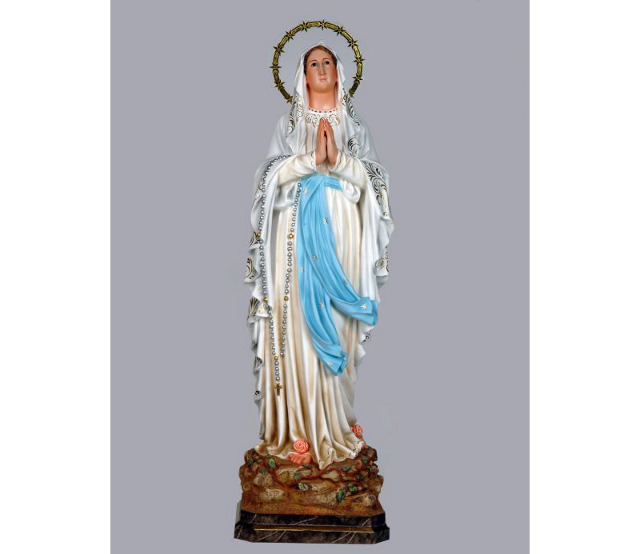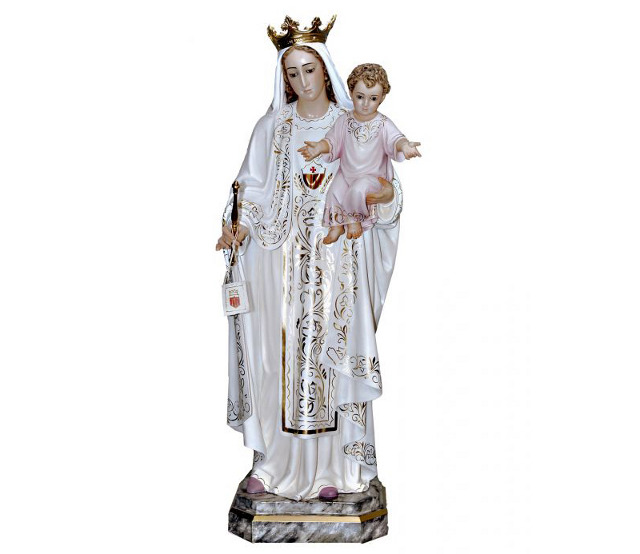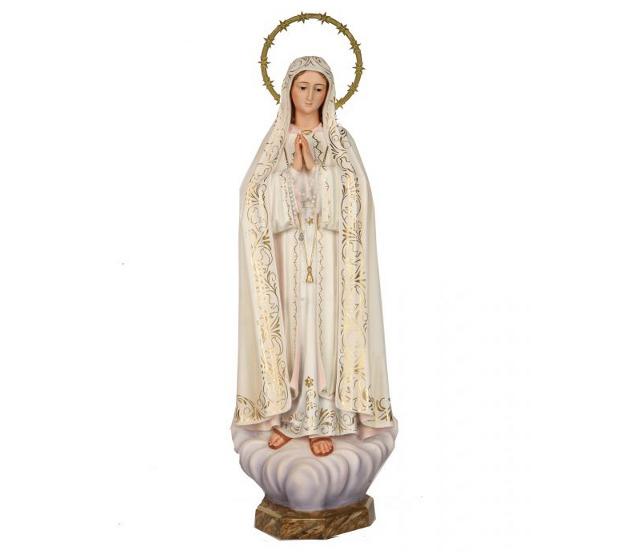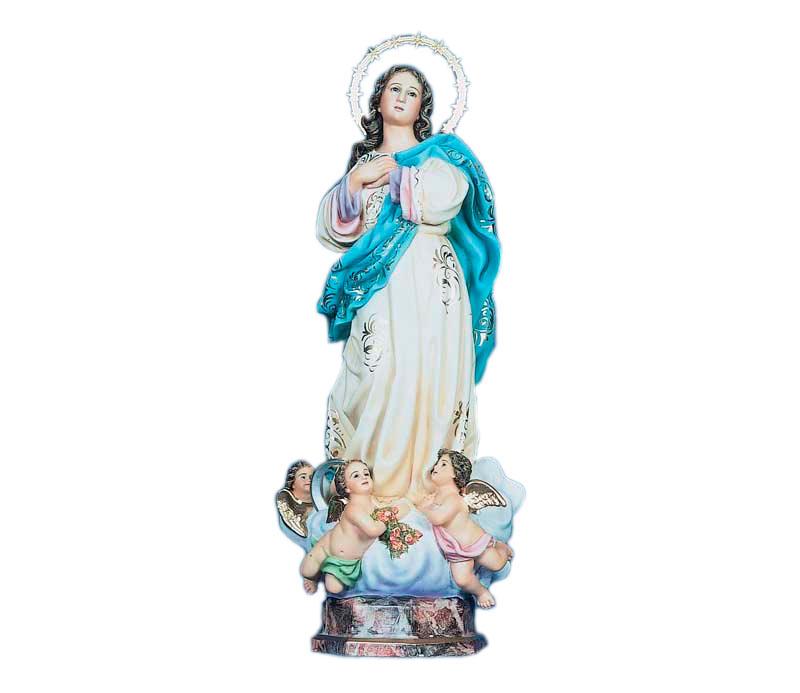
Image of the Virgin of the Pillar
Image of the Virgin of the Pillar
In our religious articles store we have a wide catalog of religious images made with a high degree of realism. Throughout the world there is a wide variety of Marian devotions that arouse great religious fervor: the image of the Virgen del Carmen , the image of the Virgen de Fátima , the image of the Immaculate Conception of Mary , etc...
One of the most representative figures is the Virgen del Pilar, patron saint of Hispanidad and the Civil Guard. One of the places where the greatest devotion is professed is in Zaragoza, with the Basilica del Pilar being one of its most representative monuments.
In Saragossa, in Spain and in many other countries, on October 12, with the season of Advent about to begin, It is a very important date because it is celebrated on the day of the Virgen del Pilar.
There are numerous sources that relate the events that originated the devotion to the Virgen del Pilar. Among all of them, it is worth highlighting the information provided by the “ Magna Moralia”, also known as “Moralia, sive Expositio”, written by Saint Gregory the Great at the end of the 6th century. Through the text it is known that already in the century in which the work was written there was an important knowledge of the tradition of the Virgen del Pilar and Santiago el Mayor.
The cult of the image of the Virgen del Pilar: Santiago Apóstol in Hispania Tarraconensis.
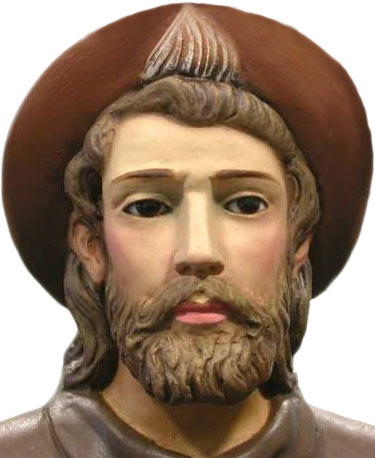 The birth of devotion to the Virgen del Pilar dates back to the years after the death and Resurrection of our Lord Jesus Christ.
The birth of devotion to the Virgen del Pilar dates back to the years after the death and Resurrection of our Lord Jesus Christ.
It is in those early years that the disciples, following the instructions of Jesus
“Go into all the world and preach the gospel to every creature. He who believes and is baptized will be saved; but he who does not believe will be condemned."
Following Jesus' directions, the Apostles split up and travel far and wide across the known land.
Santiago Apóstol , inspired by the wisdom of the Holy Spirit, decides to evangelize the lands of Hispania Tarraconensis, a Roman province located at the end of the earth ( Finisterrae ), land of the pagan Celtiberian tribes.
Once the decision is made, Santiago Apóstol decides to visit the Virgin Mary to ask for her blessing. He travels to his brother Juan's house, where the Virgin resides at that time. Mary welcomes him and blesses his journey with the following words:
"Go, son, fulfill the mandate of the Master and for Him I beg you that in that city of Spain in which the largest number of men convert to the faith, you build a church in my memory as I will show you."
The Virgen del Pilar helps Santiago Apóstol to evangelize the pagans.
Santiago el Mayor, strengthened by the blessing of the Virgin, leaves Jerusalem to go to the lands of Hispania Tarraconensis.
His journey takes him to the northwest of the peninsula, to the land where the Asturian and Galician tribes lived. These people had never heard the word of the Lord and the Apostle James wants to make it known to them so that they can love Jesus in the same way that he does.
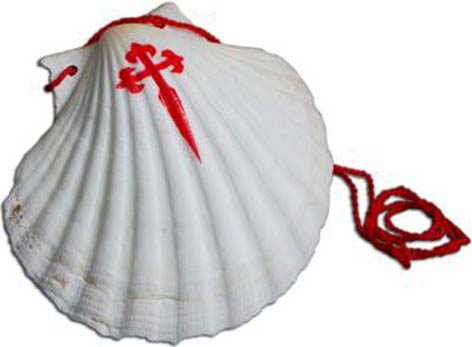 Despite his tireless efforts, Santiago Apóstol is unable to make people understand his message of love and peace. For a long time he tried to evangelize the people of the area but found great resistance to conversion.
Despite his tireless efforts, Santiago Apóstol is unable to make people understand his message of love and peace. For a long time he tried to evangelize the people of the area but found great resistance to conversion.
Faced with the difficulties he encounters, he decides to travel around the peninsula in search of new places to carry out his mission. After many days on the road, he arrives at Caesaraugusta, currently known as Zaragoza. He settles in this place and begins, again, his evangelizing work. After a long time he manages to convert eight men into Christians.
Despite what has been achieved, the Apostle Santiago is not satisfied. Despite having opened eight new souls to Jesus, inside he does not feel that he is achieving the achievements that he had set for himself when he left Jerusalem.
To seek inspiration, he decides to distance himself from his followers and find a secluded place to pray. Find this place on the banks of the Iberus Flumen river, current Ebro.
Our Lady of the Pillar, the first Marian apparition in Christian history
According to tradition, it is January 2, year 40 AD. C. when Santiago Apóstol approaches the river to pray in search of divine inspiration.
In that moment of spiritual retreat he begins to hear a beautiful song. The beautiful melody is sung by angels singing “Ave Maria Gratia Plena!”. Behind them, the Apostle Santiago sees the immaculate image of the Virgin Mary that rests on a jasper column. Mary, who still lives in mortal flesh in Jerusalem, tells James the Apostle:
“Here is my son Jacobo (or Santiago), the place of my choice. Look at this pillar that I sit on, sent by my son and your teacher. On this land you will build a chapel. And the Most High will work, for Me, admirable miracles on all those who implore, in their needs, my help. This pillar will remain here until the end of time , so that worshipers of Jesus Christ will never be lacking."
The Apostle Santiago, comforted by the words of the Virgin, feels his heart full of renewed faith. Helped by the Christians who had already converted, he began to build a chapel around the pillar that the Virgin had brought him. Before the work was finished, Santiago Apóstol consecrated it and gave it the title of Santa María del Pilar , thus becoming the first church in Christianity dedicated to the Virgin Mary.
This temple will be the base to promote the evangelization of the Iberian peoples. Over the years, it will become an important center of Christianization and pilgrimage.
Over the centuries the church has undergone innumerable transformations, but the pillar remains on the altar of the Zaragoza Basilica.
A Pillar for the image of the Virgin
According to tradition, the Pillar of jasper that the Virgin deposited on the banks of the Ebro River remains in the same place where it was deposited for the first time.
The Sacred Column measures 1.7 m. high and 24 cm. diameter. It is decorated with two layers, the first one is bronze and the most superficial is silver.
In the last modification of the Basilica del Pilar, a chapel was created with a beautiful dressing room around the Pilar. The dressing room is made of silver and green marble. It is decorated with 72 stars topped with jewels that the devotees of Our Lady of the Pillar have donated over the years.
The Jasper Pillar serves as a support for an image of the Virgen del Pilar, popularly known as the Pilarica. This figure is believed to be after 1435, the year in which a terrible fire destroyed the altarpiece of the Chapel of the Basilica.
The current image is an effigy with 36 cm. Tall. It was made following the sculptural criteria of the European Gothic currents of the early fifteenth century. It is believed that this figure was made by the hands of D. Juan de la Huerta. The figure represents the Virgin Mary with clothing typical of the Gothic era. In her left arm she holds her Son. The Child Jesus is leaning on his Mother totally naked. The image of the Virgen del Pilar is crowned with an imperial crown and a halo of diamonds.
The Sacred Chapel of the Basilica is completed with an image of Saint Michael, made of silver and ivory; two cherubs holding candlesticks, donated by Philip II; and the frescoes in the dome. The fresco known as Miracle of Calanda stands out for its historical relevance. The intervention of the Virgen del Pilar caused Miguel José Pellicer, known as the lame man from Calanda, to have his right leg restored, which he had lost two years and five months earlier. Miracle long documented by figures of the time.
"We decide, pronounce and declare that Miguel Pellicer, a native of Calanda, who is the subject of this proceeding, has miraculously restored his right leg, which had been previously cut off, and that such restitution has not been carried out naturally, but prodigiously. and miraculously, having to be judged to be a miracle, because all the circumstances that the law requires to constitute a true miracle have occurred, as we hereby attribute it to a miracle, and for such a miracle we approve, declare and authorize it".
Judgment of April 27, 1641, signed by D. Pedro de Apaolaza Ramírez, Archbishop of Zaragoza, conclusion of the corresponding canonical process that was opened on June 5, 1640.
Other religious images of the Virgin Mary of Olot
Virgin of Lourdes image of Olot
Image of Olot Virgen de las Mercedes
Image of Olot Virgin of Fatima
Image of Olot de la Purisima Cocepción
In our online store, in addition to images of the Virgin Mary, we have for sale a wide variety of Marian religious articles for Virgin Mary festivities.
